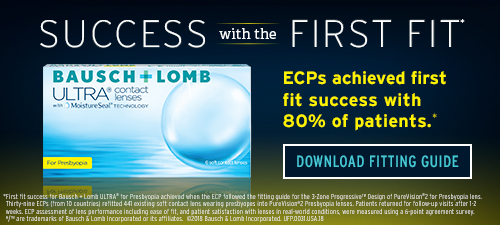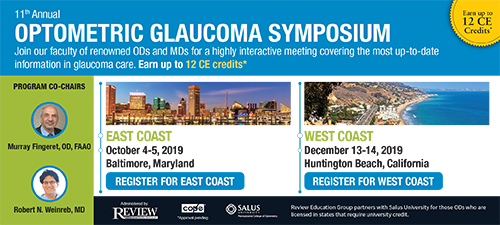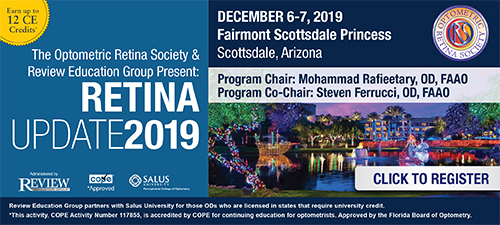
A
weekly e-journal by Art Epstein, OD, FAAO
|
||||||||||||||||||||||||||||||||||||||||||||||
Off the Cuff: Leadership
Welcome to this morning’s Optometric Physician, delayed from its usual Saturday morning arrival by a totally crazy last week. As you read this, one week ago I was in Boston to attend the Inaugural Industry & Employer Relations Meeting, hosted by the New England College of Optometry. While the name may not inspire visions of salvation or disruptive change, I will tell you that this was among the most important meetings that I have attended in my entire career.
Most of you are aware of my frustration with the lack of leadership in our profession. This was an incredibly refreshing moment where I got to witness true, selfless, forward-thinking leadership. I’ve known Howard Purcell for a good part of my professional career and have had the pleasure of watching him develop into one of the most powerful forces for good in optometry of our generation. Howard’s power and reach were evident in the broad range of attendees that spanned just about every aspect of our profession and industry. His assuming the presidency of NECO at this point in the college’s history is the perfect example of right person, right time and right place.
|
||||||
 |
||
| Keratoconus: the ABCD Grading System | ||||
A previously published normative database was reanalyzed to generate both anterior and posterior average radii of curvature (ARC and PRC) taken from a 3.0mm optical zone centred on the thinnest point of the cornea to propose a new keratoconus classification/staging system that utilizes current tomographic data and better reflects the anatomical and functional changes seen in keratoconus. Mean and standard deviations were recorded, and anterior data were compared to the existing Amsler-Krumeich (AK) classification. ARC, PRC, thinnest pachymetry and distance visual acuity were then used to construct a keratoconus classification.
A total of 672 eyes of 336 patients were analyzed. Anterior and posterior values were 7.65 ± 0.236mm and 6.26 ± 0.214mm, respectively, and thinnest pachymetry values were 534.2 ± 30.36µm. The ARC values were 2.63, 5.47 and 6.44 standard deviations from the mean values of stages 1 to 3 in the AK classification, respectively. PRC staging uses the same standard deviation gates. The pachymetric values differed by 4.42 and 7.72 standard deviations for stages 2 and 3, respectively. A new keratoconus staging incorporates anterior and posterior curvature, thinnest pachymetric values and distance visual acuity, and consists of stages 0 to 4 (5 stages). The proposed system closely matches the existing AK classification stages 1 to 4 on anterior curvature. Researchers wrote that, since it incorporates posterior curvature and thickness measurements based on the thinnest point rather than apical measurements, the new staging system better reflects the anatomical changes seen in keratoconus. |
||||
SOURCE: Belin MW, Duncan JK. Keratoconus: The ABCD grading system.Klin Monbl Augenheilkd. 2016;233(6):701-7. |
||||
 |
||
| New Developments in Anterior Segment Optical Coherence Tomography for Glaucoma | ||||
The aim of this review was to summarize the new developments in anterior segment optical coherence tomography (AS-OCT) for glaucoma.
The authors wrote that the field has seen significant advances in the measurement of glaucoma through the use of AS-OCT in recent years. They added that a more widespread use of AS-OCT in the clinical study of various glaucomas warrants review, which includes angel assessment, trabecular meshwork and Schlemm's canal assessment, and assessment of the filtering bleb and tube. AS-OCT was recently developed and has become a crucial tool in glaucoma clinical practice. It is a noncontact imaging device that provides the detailed structure of the anterior part of the eyes. In this review, the authors discussed the various clinical applications of AS-OCT for glaucoma disease, such as angle assessment, trabecular meshwork and Schlemm's canal assessment, or assessment of the filtering bleb and tube. |
||||
SOURCE: Wang D, Lin S. New developments in anterior segment optical coherence tomography for glaucoma. Curr Opin Ophthalmol. 2016;27(2):111-7. |
||||
 |
||
| Evaluation of the Macula Prior to Cataract Surgery | ||||
Studies of patients with cataract but no clinically detectable retinal disease have shown that routine use of optical coherence tomography (OCT) prior to cataract surgery can detect subtle macular disease, which may alter the course of treatment or lead to modification of consent, according to the authors of a paper. They wrote that routine use of OCT has been especially useful in patients being considered for advanced-technology intraocular lenses (IOLs), as subtle macular disease can be a contraindication to the use of these lenses. However, studies on the cost-effectiveness of routine use of OCT prior to cataract surgery are hard to find. Furthermore, the authors noted, other technologies that assess retinal function rather than structure, such as microperimetry and electroretinogram (ERG), need further study to determine whether they can predict retinal potential in cataract patients. The authors wrote that there is growing evidence for the importance of more detailed retinal evaluation of cataract patients even with clinically normal exam. They added that OCT has been the most established and studied method for retinal evaluation in cataract patients, but other technologies such as microperimetry and ERG are beginning to be studied. |
||||
SOURCE: McKeague M, Sharma P, Ho AC. Evaluation of the macula prior to cataract surgery. Curr Opin Ophthalmol. 2018;29(1):4-8. |
||||
| News & Notes | ||||||||
| AAOF Announces Vincent Salierno Scholarship Recipients The American Academy of Optometry Foundation announced the recipients of the 2019 2019 Vincent Salierno Scholarships. Students pursuing a doctorate of optometry degree are nominated by their institution, and recipients each receive $2,000 to apply toward tuition. Vincent Salierno was on the board of directors of the Columbus Hospital in New Jersey. After his death in 1973, his widow, Rose, established the Vincent Salierno Scholarship Fund with Foundation to provide scholarships to students in the field of optometry. View the recipients. |
||||||||
| Johnson & Johnson Vision to Cease Customer-facing Sightbox Operations Johnson & Johnson Vision announced it would cease customer-facing operations for Sightbox, its U.S.-based online contact lens subscription service, while it evaluates options for the business over the next few months. The company said this strategic decision will enable it to focus its connected commerce investments, which remain a priority, in other program areas. Sightbox will ship existing members their remaining annual contact lens subscriptions free of charge but will accept no renewals or new subscriptions during the evaluation period. Read more. |
||||||||
| Eaglet Eye ESP Has New Landing Page & More Design Algorithms Eaglet Eye BV’s new landing page for the Eye Surface Profiler will enable practitioners to learn about the advantages of scleral topography and the ESP. Eaglet also enhanced its commitment to lab neutrality, and now offers nearly 40 lens algorithms (50 by GSLS) so practitioners have access to simplified fitting with most major specialty lens designs. The company is making new algorithms available to ESP users at no charge. Learn more. |
||||||||
|
||||||||
|
||||||||
|
Optometric Physician™ (OP) newsletter is owned and published by Dr. Arthur Epstein. It is distributed by the Review Group, a Division of Jobson Medical Information LLC (JMI), 11 Campus Boulevard, Newtown Square, PA 19073. HOW TO ADVERTISE |




